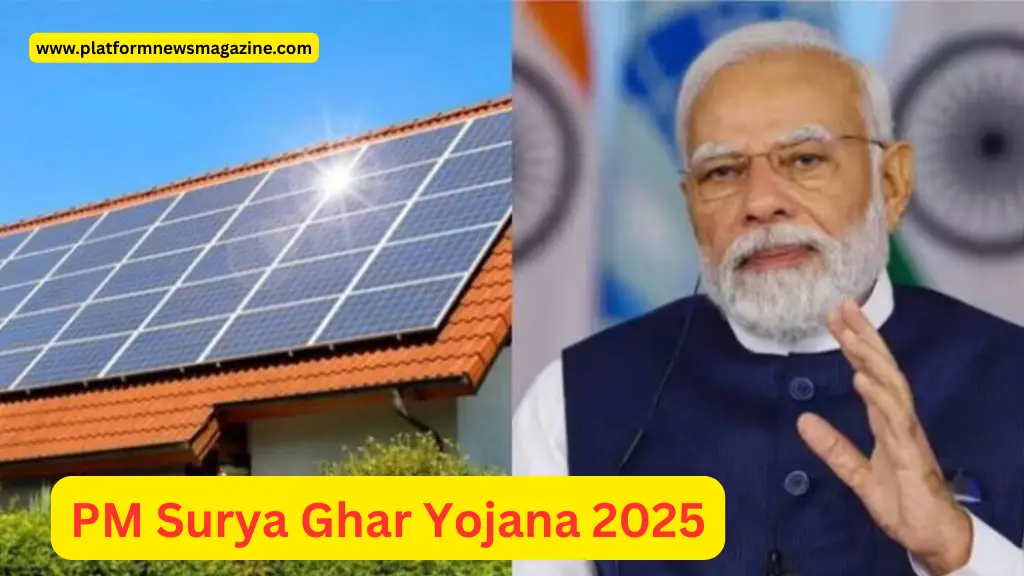Introduction: What If Your Electricity Bill Was ₹0?
Imagine waking up to a power-packed morning, literally your fan spinning, your geyser heating, and your mobile charging, all powered by the sun, for free. That’s not some sci-fi fantasy anymore. With the PM Surya Ghar Yojana 2025, the Government of India is turning this into a real possibility for millions of Indian households.
But here’s the twist: while most articles will just throw generic scheme details at you, we’re diving into real-life benefits, uncommon facts, personal insights, and practical tips to help you make the most of this once-in-a-generation opportunity.
What Is PM Surya Ghar Yojana 2025, Really?
At its core, PM Surya Ghar Muft Bijli Yojana 2025 is a government initiative that offers financial support for installing rooftop solar panels on residential homes, aiming to provide up to 300 units of free electricity per month.
But the 2025 version isn’t just a rerun of past schemes. It’s bigger, more inclusive, and better funded with a whopping ₹75,000 crore budget backing it.
Quick Snapshot:
FeatureDetails Launch Year2024 (with a major push in 2025) Budget Allocation: ₹75,000 crore Beneficiary Target 1 crore households Monthly Free Units Up to 300 units Subsidy Direct Transfer Yes (to bank account) Online Application pmsuryaghar.gov.in
Why You Should Care: Not Just Free Power, But Power to You

Here’s the deeper value of the scheme that goes beyond just “saving electricity bills.”
1. Savings Add Up Over Time
If your average monthly bill is ₹1,000, that’s ₹12,000 a year saved minimum. Over 10 years? ₹1.2 lakh in your pocket. And solar panels last up to 25 years. Do the math.
2. Power Cuts? Not Anymore
In tier-2 or rural areas, load shedding is still a nightmare. Solar gives you independence. One user from Madhubani, Bihar, shared on Reddit (yes, real folks are talking!) how his rooftop system saved his mother’s health; her oxygen concentrator kept working during a blackout.
3. Property Value Boost
According to a 2023 industry report by MNRE, homes with solar installations saw a 6-8% higher resale value in urban markets.
Unique Insights You Won’t Find Everywhere
1. You Can Sell Extra Power to the Grid
Yes, it’s called net metering. If your system produces more than you use, you can sell that back to the grid. States like Gujarat and Karnataka are already enabling payouts for surplus solar power.
2. You Don’t Need to Pay the Full Cost Upfront
Many approved vendors are offering zero down payment EMI options tied with government subsidies. You can get your rooftop solar installed for as low as ₹3,000/month EMIs.
3. The Scheme Encourages Women Beneficiaries
A lesser-known clause promotes the inclusion of female household heads in the application process to drive financial empowerment.
Step-by-Step Guide: How to Apply for PM Surya Ghar Yojana 2025
Here’s how you can get started without getting lost in paperwork.
✅ Step 1: Visit the Official Portal
Go to pmsuryaghar.gov.in. Click on “Apply for Rooftop Solar.”
✅ Step 2: Register Using Your Electricity Connection
Enter your state, electricity distribution company (DISCOM), and consumer number. You’ll get an OTP for verification.
✅ Step 3: Submit the Application
Upload the required documents:
- Aadhaar Card
- Electricity bill
- Property tax receipt (optional, but helps speed up approval)
✅ Step 4: Choose a Registered Vendor
Pick from the list of MNRE-approved vendors in your area. They’ll guide you through site inspection and feasibility.
✅ Step 5: Get Installation Done
Post-approval, installation is usually done within 15–30 days.
✅ Step 6: Subsidy Transfer
After verification, the central subsidy (up to ₹78,000) will be directly credited to your bank account.
Expert Tips to Maximize Your Solar Benefits
Choose Polycrystalline Panels if You’re on a Budget.
While monocrystalline panels are more efficient, polycrystalline panels are cheaper and work well in India’s tropical climate.
Tilt Angle Matters
Ensure your panels are installed at the correct tilt angle (usually between 10–30°) for maximum sunlight absorption. A bad angle = poor ROI.
Clean Panels = More Power
Dust can reduce panel efficiency by up to 20%. Clean them once a month — a simple garden hose will do.
Use Smart Inverters
Hybrid inverters can store solar energy and switch automatically between grid and battery — a smart choice for areas with frequent outages.
Personal Story: My Uncle’s ₹0 Electricity Bill (Yes, Literally ₹0)
My uncle in Jaipur installed a 3kW rooftop solar system in mid-2023 under a state subsidy pilot program (similar to PM Surya Ghar). He now gets 250–280 units/month from solar, which covers his entire household usage.
His last four bills read “₹0 due.” But here’s the kicker: his electricity provider paid him ₹237 in February for surplus power sent to the grid.
He told me, “I never thought I’d earn from electricity, but here I am, a solar entrepreneur without even trying!”
Challenges to Watch Out For
Let’s not sugarcoat it — here are a few things you should be prepared for:
- Slow local DISCOM approvals in some regions
- Fake vendors not on MNRE’s approved list (always verify!)
- Shading issues if your roof isn’t fully open to the sun
- Upfront documentation hassle, especially in rented or joint properties
But all these are solvable, especially if you follow the proper channels.
Conclusion: Will You Be Part of India’s Solar Revolution?
PM Surya Ghar Yojana 2025 isn’t just a subsidy scheme — it’s a vision for an energy-independent India. The sun shines on your roof every day. Isn’t it time you turned it into free power?
What’s stopping you from applying? Got questions or need help with the process?
Drop your thoughts in the comments below — or share your solar journey if you’ve already made the switch!
🔥 Pro Tip: Bookmark pmsuryaghar.gov.in and follow @mnreindia on Twitter for real-time updates, deadlines, and approved vendor lists.